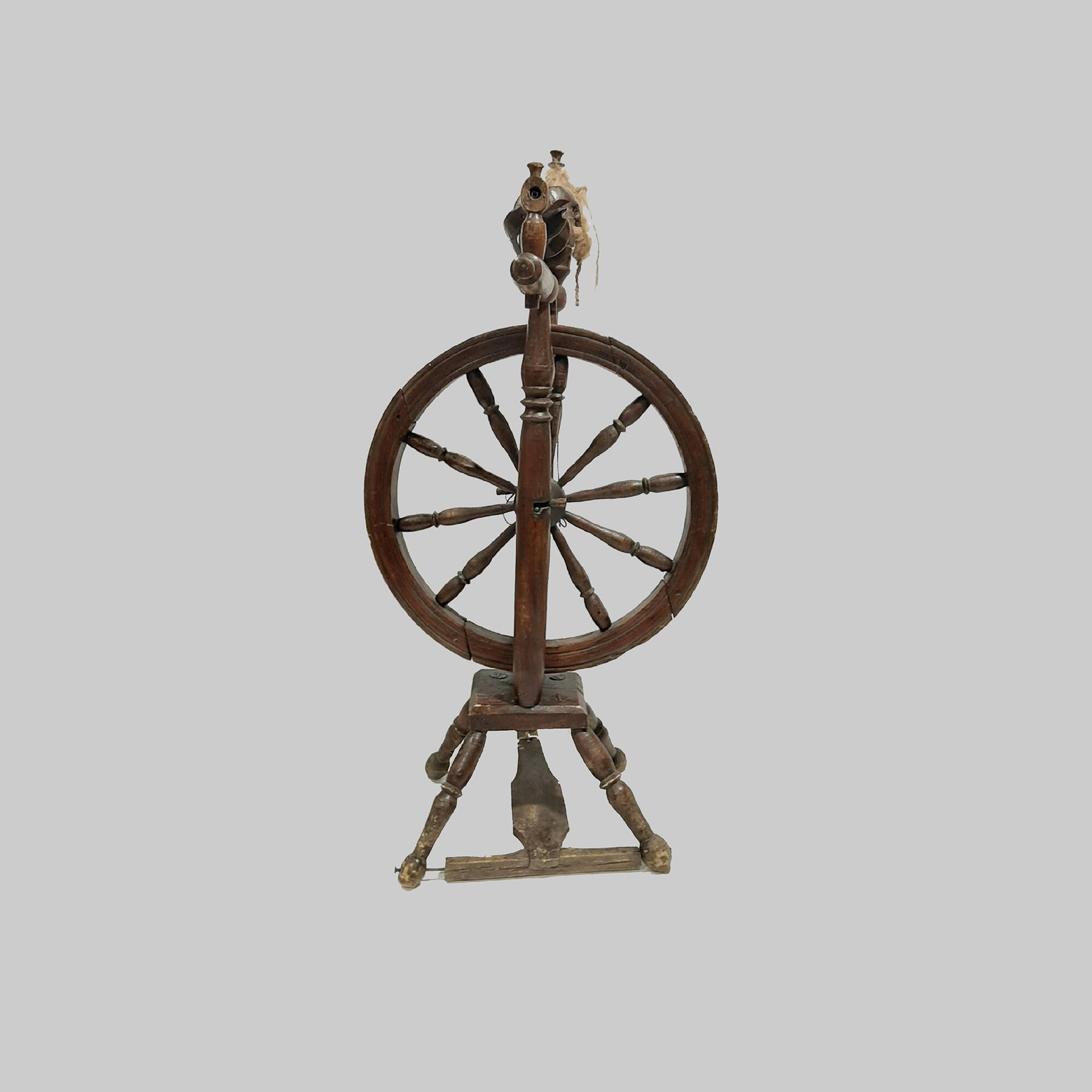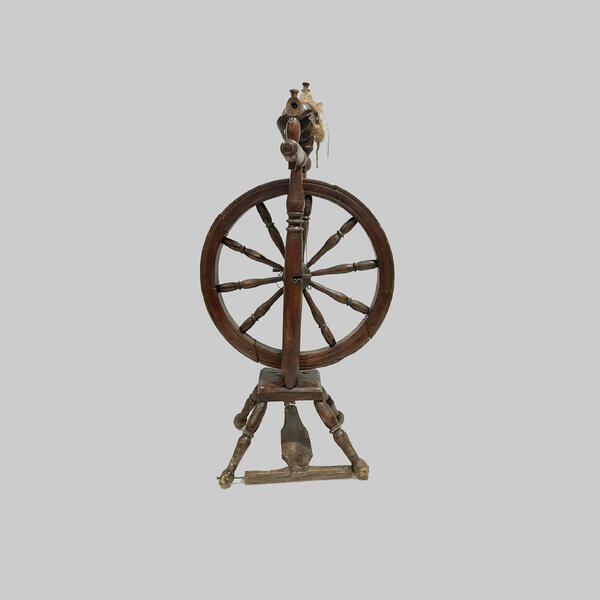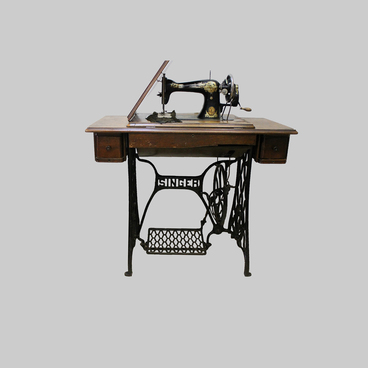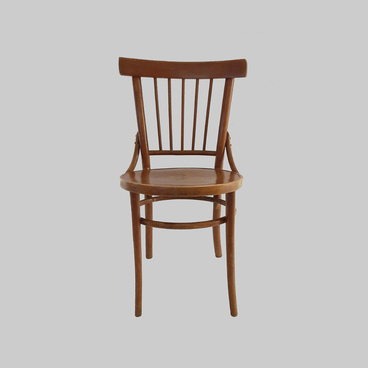The self-spinning machine from the museum’s collection is a partially mechanized pedal-driven machine mounted on two racks. The wheel, bobbin, and screw are well preserved. On top of the stationary frame, there is fixed rotating frame with metal hooks for the thread.
The spinneret pressed the foot pedal attached to the connecting rod and set the wheel in motion. The wheel, in turn, caused the bobbin to rotate. Together with the rotation of the bobbin, the fiber was spun into a thread. The self-spinning machine freed up two hands for pulling the tow and forming the thread. It was several times more effective than a spindle and allowed for spinning 400 grams of wool per day.
There are two types of leg self-spinning wheels, i.e. laying spinning wheel, or “chukhonka”, and standing spinning wheel, or “russkaya”. The difference was in the position of the wheel and the reel with the spindle. The wheel and reel of the chukhonka were located slightly at an angle, while russkaya spinning wheel had its wheel and reel perpendicular to the floor surface. In the Ancient Rus, the standing spinning wheel was mainly used, while in Scandinavia, Europe, and Karelia, chukhonkas became widespread.
The first spinning wheel was invented in Ancient Rome. Yarn from old spinning wheels was obtained in different quality and thickness. In Europe, the improved spinning wheel appeared around the 14th century. The wheel, which was initially driven by the hand, facilitated and accelerated the spinning process. With this method, the craftswoman used both hands. With the left, she fed the fibers to the end of the spindle, and with the right, she scrolled the wheel. As the thread increased by the length of the hand, it was wound on the spindle rod and continued to spin further.
Some sources claim that the spinning wheel appeared in Russia under Peter the Great, but judging by archaeological finds, this happened much earlier, i.e. in the 14th century. Some parts of it were found during excavations in Novgorod. In the peasant life, self-spinning wheel was firmly established in the 19th century. A hundred years ago, the spinning wheel was incredibly important for every peasant family. When ready-made threads and fabrics became easier and cheaper to buy than to make with own hands, the good old spinning wheels disappeared from homes.
The spinneret pressed the foot pedal attached to the connecting rod and set the wheel in motion. The wheel, in turn, caused the bobbin to rotate. Together with the rotation of the bobbin, the fiber was spun into a thread. The self-spinning machine freed up two hands for pulling the tow and forming the thread. It was several times more effective than a spindle and allowed for spinning 400 grams of wool per day.
There are two types of leg self-spinning wheels, i.e. laying spinning wheel, or “chukhonka”, and standing spinning wheel, or “russkaya”. The difference was in the position of the wheel and the reel with the spindle. The wheel and reel of the chukhonka were located slightly at an angle, while russkaya spinning wheel had its wheel and reel perpendicular to the floor surface. In the Ancient Rus, the standing spinning wheel was mainly used, while in Scandinavia, Europe, and Karelia, chukhonkas became widespread.
The first spinning wheel was invented in Ancient Rome. Yarn from old spinning wheels was obtained in different quality and thickness. In Europe, the improved spinning wheel appeared around the 14th century. The wheel, which was initially driven by the hand, facilitated and accelerated the spinning process. With this method, the craftswoman used both hands. With the left, she fed the fibers to the end of the spindle, and with the right, she scrolled the wheel. As the thread increased by the length of the hand, it was wound on the spindle rod and continued to spin further.
Some sources claim that the spinning wheel appeared in Russia under Peter the Great, but judging by archaeological finds, this happened much earlier, i.e. in the 14th century. Some parts of it were found during excavations in Novgorod. In the peasant life, self-spinning wheel was firmly established in the 19th century. A hundred years ago, the spinning wheel was incredibly important for every peasant family. When ready-made threads and fabrics became easier and cheaper to buy than to make with own hands, the good old spinning wheels disappeared from homes.



